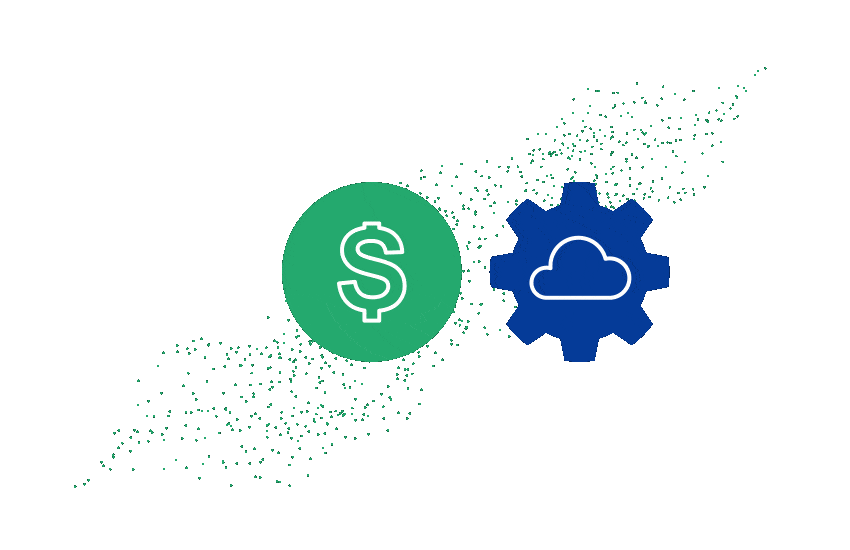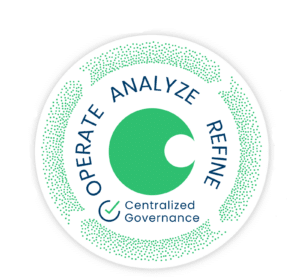Cloud native applications running on containers and microservices have a completely different architecture and are designed to be more scalable, reliable, and flexible than legacy apps. They’re also much more complex, leading to an observability data volume and cost explosion.
Chronosphere is built to put you in control of your observability costs.

Observability solutions built before cloud native lack the controls required to address the sharp data cardinality and volume increases, creating significant challenges when running at scale. Additionally, in the past, companies typically ran dedicated observability teams to own all instrumentation and monitoring.
With microservices, instrumentation and monitoring are usually the responsibility of the teams owning each service. These teams are unlikely to have insight into what their observability data costs their company. Conversely, those in charge of managing costs no longer know how or if individual teams use the expensive data.
Here are some reasons it’s challenging to control observability costs in cloud native environments using traditional observability tools.
On top of the technical complexity that cloud native environments create, an increasing layer of organizational complexity exacerbates observability data growth and unpredictability challenges.
More distributed teams are creating more dashboards, reports, and alerts, driving increases in metadata. Most observability solutions don’t give these teams insights into their usage and lack the ability to create guardrails on their usage. As a result, teams blindly collect whatever data they want for “free” until they are told there is a problem.
Cloud native environments emit a massive amount of monitoring data — somewhere between 10x and 100x more than traditional VM-based environments.
As organizations increase their adoption of cloud native and start scaling their environments, their observability data volumes start to explode, along with the associated cost of managing and storing this data.
of organizations say their observability data is growing at a concerning rate.
Cloud native environments are very complex. Minor code changes can unintentionally impact observability data volumes and cardinality.
Most observability solutions don’t provide the insights needed to identify and manage these changes effectively - leading to unplanned overages and massive budget overruns.
Chronosphere helps you identify and elevate valuable data using our Control Plane to reshape the overall dataset to eliminate waste, unnecessary noise, and cost.
With Chronosphere, you still collect all the same observability data, but it’s aggregated and transformed into actionable insight that is usable for developers while also being highly cost-efficient. The result is better control over data growth, increased accountability, and greater predictability. Here’s how Chronosphere helps you achieve all three:

Chronosphere allows observability teams to set observability data quotas by team, service, or other arbitrary filter to prevent unexpected overages and drive responsibility for observability data growth to the teams that know the data best.
More control means lower data volumes - and lower cost. Instead of being reactive to increased observability data growth, Chronosphere allows you to be proactive by giving you the tools and information you need to make data-driven decisions about your observability data.
On average, Chronosphere customers are able to reduce their observability data volumes by 60% at the start. And we only charge you for the data you persist. This leads to significant cost savings while improving visibility and outcomes.
First, Chronosphere has a no overages licensing model. Our Customer Success Team works very closely with you to help manage observability data growth using the Chronosphere Control Plane.
The Control Plane helps you control growth by providing real-time insights into observability data usage and cost and the ability to shape data based on need, context, and utility. Adjusting and transforming your observability data and applying quotas allows you to control the pace of growth, making it more predictable.
How we increase predictability for metrics and traces.
Control Metrics Volume and Cost
Chronosphere provides analytics tools like the Traffic Analyzer and Usage Analyzer for metrics.
Customers can use the information derived from these analysis tools to transform their metrics using Chronosphere’s sophisticated shaping capabilities.
This allows them to aggregate, downsample, and/or drop metrics to eliminate waste, unnecessary noise, and cost.
Collect the Right Trace Data When You Need It Most
Chronosphere provides centrally managed dynamic head-based sampling and tail-based sampling for traces. Most organizations don’t want to generate, egress, store, or query across the entire volume of their trace data — it is too expensive.
Chronosphere allows customers to set a low head-based sampling rate to reduce costs, dynamically turn up trace sampling when higher fidelity observability is critical, and quickly turn it down again when the system is healthy - without redeploying. You can adjust head-based sampling rates as frequently as every 15 seconds.
Using dynamic head-based sampling in conjunction with tail-based sampling allows you to derive the most value from your trace data when needed while controlling costs.
To quickly identify how often your applications emit traces and troubleshoot spikes in ingestion rates, the Trace Analyzer provides a real-time view of incoming traces grouped by tags and their relative frequency.